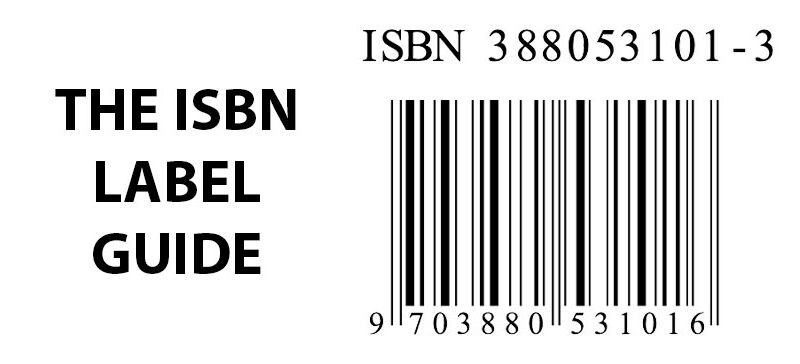In the world of publishing, being able to identify and track books accurately is essential for publishers, distributors, and book retailers alike. ISBN labels are used globally for this purpose, but ISBN isn’t the only international tracking system. Another widely used system is EAN. While both can be used to identify books, these systems have some major differences.
In this ISBN label guide, we’ll explain what ISBN is, what the labels are used for, as well as how ISBN compares with EAN and other systems. Understanding the distinct uses for each system is crucial for publishers and retailers alike to navigate the complex landscape of product identification and distribution.
What Is ISBN?
ISBN, which stands for International Standard Book Number, is a system used to create unique numerical identifiers. ISBNs are used by publishers, booksellers, libraries, and individuals to order and list books as well as manage inventory. Each ISBN has 13 digits and usually starts with 978 or 979. A unique ISBN is assigned to a specific edition and format of a book. For example, a large-print edition will have a separate number from the standard edition of the same book. This system was created to provide a standard way of identifying books.
What Are They Used for?
ISBN labels are probably one of the last things you might notice on a book’s cover, but they are essential. These labels are used globally for identifying and tracking books. Without them, it would be much more difficult for retailers and consumers alike to track down the right book or keep track of inventory.
Here are some of the specific ways ISBN labels are used:
- Inventory control: ISBN labels help publishers, booksellers, and libraries keep track of their inventory by uniquely identifying each edition and format of a book. With inventory control software, ISBN labels can be easily scanned for quick inventory counts.
- Ordering: Booksellers and wholesalers use ISBN labels to order accurately and replenish their stock from publishers and distributors. ISBNs help them identify the correct editions of the books they are ordering.
- Cataloging: Libraries and online book databases use ISBN labels to catalog and organize their collection, making it easier for patrons to find specific books. Patrons can also scan the ISBN to check out their copy of the book.
- Retail: ISBN labels are included on the cover of the book, usually on the back corner. They provide a standardized way for customers to find the exact book they are looking for.
- International distribution: ISBNs help with international book distribution because they provide a unique identifier that is recognized across borders.
- Identify books: With so many books on the market, some might inevitably share the same name. ISBN labels help distinguish between two books with the same title to eliminate confusion.
ISBN-10 vs ISBN-13
When considering ISBN labels, you’ll likely see two different versions: ISBN-10 and ISBN-13. Both ISBN-10 and ISBN-13 were created for the same purpose. ISBN-10 was the first system, but it is now outdated. ISBN-13 was created to accommodate the growing number of books on the market.
Just as the name implies, ISBN-10 is made up of 10 digits. Each ISBN-10 is structured into four parts: a group identifier, a publisher code, an item number, and a check digit. The parts are separated by hyphens. As an example, the first edition of Harry Potter and the Philosopher’s Stone, published in 1997, has an ISBN 10 of 0-7475-3269-9. While you will still come across ISBN-10 labels, you’ll notice they are used on books published before 2007. That’s because ISBN-10 is now outdated. All new books use ISBN-13.
ISBN-13, on the other hand, is made up of 13 digits. It comprises five parts: a three-digit prefix, a group identifier, a publisher code, and item number, and a check digit. The parts are separated by hyphens. As an example, the 2014 edition of Harry Potter and the Philosopher’s Stone has an ISBN-13 of 978-1-4088-5565-2. ISBN-13 was introduced in 2007 since ISBN-10 was running out of unique numbers. ISBN-13 is backward compatible with ISBN-10, which essentially means that ISBN-10 codes can be converted into ISBN-13. In some cases, you’ll see books with both an ISBN-10 and ISBN-13 on the label.
ISBN vs EAN
ISBN and EAN, which stands for European Article Number, are both standardized systems used globally for identifying books, but they serve different purposes and have different formats. ISBN was specifically designed to identify books and related products like audiobooks, eBooks, and other print or digital publications. It consists of 10 or 13 digits, and is used globally in the book publishing industry.
EAN, on the other hand, was developed for identifying retail products and is used for a wide range of industries beyond books, including consumer goods, pharmaceuticals, and more. EANs can have 8 digits, but typically consist of 13 digits: a three digit country code, manufacturer code, product code, and check digit. Just like ISBN labels, EAN labels are used worldwide to identify products, manage inventory, and track products through the supply chain. While EAN and ISBN differ in scope, these systems are compatible with one another. For example, an ISBN can be encoded into an EAN so that the book can include the price on the label.
ISBN Barcode with Price
Did you know that an ISBN barcode typically does include the price of the book? That’s because ISBNs are used to track and identify books and help with inventory management.
If you want to include the price in the barcode for scanning at the point of scale, you’ll want to use a different type of barcode–either a UPC (Universal Product Code) or an EAN barcode. These barcodes include the price along with other information, such as the product identifier, and are commonly used in retail environments. Should you need to change the price, you would need a new EAN or UPC, but the ISBN would stay the same.
So, while an ISBN barcode itself does not include the price, you can choose to use a separate barcode system to encode the price information into the barcode.
Where are ISBN Labels Used?
Within the book publishing and distribution industry, ISBN labels are used in various contexts. Some common places where ISBN labels are used include:
- Book covers: ISBN labels are usually printed on the back cover or spine of books to uniquely identify each edition and format.
- Barcodes: ISBNs are encoded into barcodes, which can be scanned at various stages of the book distribution process, including inventory management, ordering, and shipping. This helps automate certain processes and reduce human error.
- Inventory management systems: ISBN labels are integrated into inventory management systems used by publishers, booksellers, and distributors to track the movement of books through the supply chain.
- Library catalogs: Libraries use ISBN labels to help catalog and organize their collections so that patrons can search for and locate specific books based on their ISBNs.
ISSN vs ISBN Labels
Another standardized identification you may come across is ISSN. ISSN, or International Standard Serial Number, differs from ISBN in format and purpose. While ISBN labels are used to identify books, ISSN labels are used for serial publications.
For example, you may see an ISSN on periodicals, journals, magazines, and newspapers. Unlike ISBN labels, ISSN labels are not legally required.
Another way ISSN labels different from ISBN labels is in the format used. ISSN labels are made up of eight digits, divided into two groups of four separated by a hyphen (for example, 1234-5678). ISSN labels are used to identify and manage serial publications. While each unique edition of a book gets a new ISBN, ISSNs stay the same for every publication of the periodical. This helps when two separate periodicals share the same name. Each would have its own ISSN, thus eliminating confusion between the two.
Wondering how ISBNs and ISSNs work for a book series? Each individual book of the series would have its own ISBN but the same ISSN. This helps identify the different books as part of the same series.
What Is a Check Digit?
One thing most of these systems have in common is the use of a check digit. But what is it? A check digit, also called a checksum or verification digit, is added to a number in order to verify the accuracy and validity of the number. It’s commonly used in identification numbers, barcodes, credit card numbers, and more.
The purpose of a check digit is to catch errors that may occur during data entry, transmission, or procession. The check digit is calculated by performing an algorithm using the other digits in the number. This makes it possible to detect many types of errors, such as transposition of digits, single-digit errors, or other input errors.
When a number with a check digit is transmitted or processed, the recipient can recalculate the check digit based on the other digits in the number and compare. If the calculated digit matches the digit in the barcode, it shows that the number is likely valid. If they don’t match, it suggests that there is likely an error.
Depending on the system, different algorithms are used to calculate the check digit. For example, both EAN and ISBN 13 use modulo 10, while ISBN 10 uses modulo 11.
Where to Get an EAN or ISBN
While both EAN and ISBN are compatible and used for similar purposes, each system is run by a separate organization. To obtain an EAN or ISBN, you’ll need to go through official registration channels. EANs are provided by GS1, which is a global organization that manages standards for identifying, capturing, and sharing product data. They are responsible for assigning EANs. You can register and purchase your EANs on their website.
ISBNs, on the other hand, are sold by different agencies in each country. In the United States, Bowker is the agency that provides ISBNs. One ISBN costs $125, but if you want to purchase a barcode with it, it costs $150. If you are self-publishing a book, many self-publishing platforms, like Amazon Kindle Direct Publishing, Book Baby, or IngramSpark, provide ISBNs as part of their services. However, using their ISBN will limit distribution to only that service.
Why EAN and ISBN Labels Are Important
Both EAN and ISBN labels play a significant role in inventory management and supply chain processes. ISBN labels uniquely identify the book’s edition and format, while EAN labels uniquely identify products, including books. Both help differentiate between similar books so there is no confusion. Because ISBN and EAN are compatible, an ISBN can be encoded into the EAN so that the book can be quickly scanned at the Point of Sale. EAN and ISBN labels work together to make tracking, cataloging, and inventory management processes more efficient.
For your ISBN labels, you need Coast Label. We only use industrial-grade materials to manufacture durable ISBN labels that will last through the publishing, distribution, and retail process. Contact us today for a free proposal!



